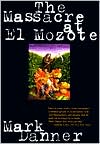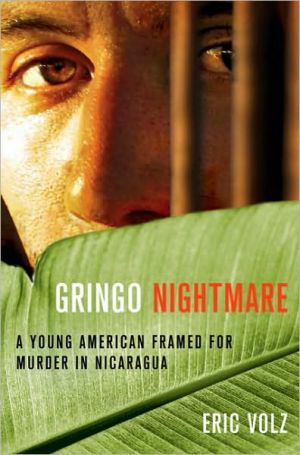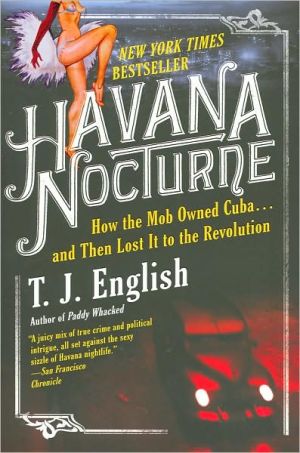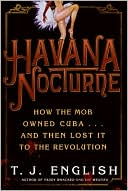The Massacre at el Mozote
In December 1981 soldiers of the Salvadoran Army's select, American-trained Atlacatl Battalion entered the village of El Mozote, where they murdered hundreds of men, women, and children, often by decapitation. Although reports of the massacre — and photographs of its victims — appeared in the United States, the Reagan administration quickly dismissed them as propaganda. In the end, El Mozote was forgotten. The war in El Salvador continued, with American funding.\ When Mark Danner's...
Search in google:
In December 1981 soldiers of the Salvadoran Army's select, American-trained Atlacatl Battalion entered the village of El Mozote, where they murdered hundreds of men, women, and children, often by decapitation. Although reports of the massacre — and photographs of its victims — appeared in the United States, the Reagan administration quickly dismissed them as propaganda. In the end, El Mozote was forgotten. The war in El Salvador continued, with American funding.When Mark Danner's reconstruction of these events first appeared in The New Yorker, it sent shock waves through the news media and the American foreign-policy establishment. Now Danner has expanded his report into a brilliant book, adding new material as well as the actual sources. He has produced a masterpiece of scrupulous investigative journalism that is also a testament to the forgotten victims of a neglected theater of the cold war. Publishers Weekly Based in large part on his extensive account published in the December 6, 1993, issue of the New Yorker , National Magazine Award winner Danner's engrossing study reconstructs events that took place some dozen years before. In December 1981, over 750 men, women and children were killed in El Mozote, El Salvador, and the surrounding hamlets. Although at the time it was covered on the front pages of both the New York Times and the Washington Post , the reports were not enough to derail Ronald Reagan's push to prove that the El Salvadoran government was ``making a concerted and significant effort to comply with internationally recognized human rights.'' Why the government chose to ignore stories in the nation's two leading newspapers is one part of Danner's sad, well-researched book. The other is why El Mozote was attacked at all. Populated by evangelical Christians who, unlike Catholic neighbors fed on liberation theology, did not abet the rebel FMLN, the people of El Mozote believed they would be spared when the army decided to wipe out insurgents and their supporters. After several days of brutal rapes and murders, a handful of people managed to escape to the rebels, setting in motion press reports and the under-investigated, coyly couched American embassy reply that allowed the U.S. to continue its massive subsidies. Danner has disinterred an event that is an equal indictment of Salvadoran brutality and American blindness. (May)
\ Publishers Weekly - Publisher's Weekly\ Based in large part on his extensive account published in the December 6, 1993, issue of the New Yorker , National Magazine Award winner Danner's engrossing study reconstructs events that took place some dozen years before. In December 1981, over 750 men, women and children were killed in El Mozote, El Salvador, and the surrounding hamlets. Although at the time it was covered on the front pages of both the New York Times and the Washington Post , the reports were not enough to derail Ronald Reagan's push to prove that the El Salvadoran government was ``making a concerted and significant effort to comply with internationally recognized human rights.'' Why the government chose to ignore stories in the nation's two leading newspapers is one part of Danner's sad, well-researched book. The other is why El Mozote was attacked at all. Populated by evangelical Christians who, unlike Catholic neighbors fed on liberation theology, did not abet the rebel FMLN, the people of El Mozote believed they would be spared when the army decided to wipe out insurgents and their supporters. After several days of brutal rapes and murders, a handful of people managed to escape to the rebels, setting in motion press reports and the under-investigated, coyly couched American embassy reply that allowed the U.S. to continue its massive subsidies. Danner has disinterred an event that is an equal indictment of Salvadoran brutality and American blindness. (May)\ \ \ \ \ Library JournalIn October 1992, the international community was shocked to hear of the recovery from shallow graves of 25 bodies, all but two of them children, near the ruined church of Santa Catarina in the village of El Mozote, El Salvador. Shortly thereafter, another 100 corpses were discovered elsewhere in the village. After 11 years of investigation, political pressure, and intense lobbying efforts by human rights groups, civil libertarians, and concerned individuals, the truth of what really happened in 1981 in this remote Salvadoran village finally began to emerge, a flashback to the infamous My Lai massacre of the Vietnam War. The situation in El Mozote was similar: villagers caught in the political crossfire between rival groups during a brutal war, trying to remain on friendly terms with their own soldiers while fearing to alienate the opposition. Danner's well-written account, which first appeared in The New Yorker and has been expanded here, does a good job of presenting evidence based on eyewitness accounts and reveals the callousness of U.S. Central American policy (the killers were American-trained soldiers of the Salvadoran Army). Especially recommended for Latin American collections.-Philip Y. Blue, Dowling Coll. Lib., Oakdale, N.Y.\ \







